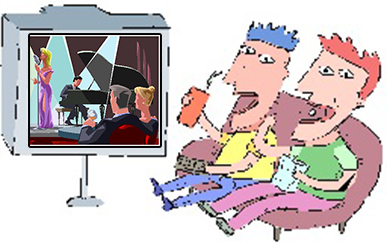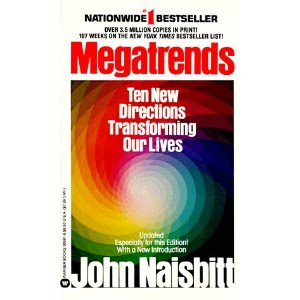Last week’s blog posed numerous questions dealing with Brian Gruber’s vision to install remote controlled television cameras and audio technology in jazz clubs all over the world through his company Showgo.tv.
If Gruber’s vision unfolds as planned, the result could be a rejuvenating boon to the indigenous art form known as “jazz” that has been diminished in terms of music market share in the last quarter of the 20th century.
The initial issue is the long-term relationship between televising a jazz event and the response of the audience. In the world of televised events and venues, there is one of two outcomes: the televised event is either a “substitute” experience or a “complementary” experience. For example, in the experience of the sports industry of the last 60 years, the result was “If you televise it, they will come!”—a complementary experience.
Allen Sanderson is a Senior Lecturer in the Department of Economics at the University of Chicago. He currently teaches a popular two-quarter sequence in introductory economics, a course on the economics of sports, and organized a team-taught multidisciplinary course entitled “Sport, Society and Science.” Sanderson is an oft-cited authority on sports economics issues, a contributor to op-ed pages on sports and non-sports topics in newspapers around the country and a frequent guest on national and Chicago-area television and radio programs. Sanderson serves on the editorial board of the Journal of Sports Economics.
I asked Sanderson to comment on the substitute vs. complementary issue with regard to sports. He commented:
 I think the evidence is pretty clear, at least in the “sporting world” – television and attendance are complements, not substitutes. Baseball first faced this with radio: If we broadcast the games, will fans just listen at home and not come to the ballpark? Then the same worry with television: If we televise the games, will fans stay home and watch the game(s) there? Bill Wirtz, now deceased but long-time owner of the ice-hockey Chicago Blackhawks, refused to televise Blackhawks’ games. Before his body was even cold, his son Rocky, who inherited the team, started televising the games!
I think the evidence is pretty clear, at least in the “sporting world” – television and attendance are complements, not substitutes. Baseball first faced this with radio: If we broadcast the games, will fans just listen at home and not come to the ballpark? Then the same worry with television: If we televise the games, will fans stay home and watch the game(s) there? Bill Wirtz, now deceased but long-time owner of the ice-hockey Chicago Blackhawks, refused to televise Blackhawks’ games. Before his body was even cold, his son Rocky, who inherited the team, started televising the games!
But other wrinkles are interesting. I’ll name a few:
1) In the NFL about 70-75% of all league revenues are from television, so it matters less and less over time if fans come to the games. In fact, one thing driving the demand for newer and bigger stadiums is to offer fans experiences they can’t get at home, because in the end for probably 50,000 fans in the stands in any stadium the views are better at home on one’s 80” television.
2) Speaking of which: we’re a far cry from the old 12-inch B & W sets. The increase in the quality of “home entertainment” capital is vastly better than ever before, and thus potentially could keep folks away.
3) I think you see this in the concert world. For example, given the quality of compact discs and home sound equipment, and the fact that it’s pretty to sit in a concert hall, classical music doesn’t have much to offer “live” nowadays, plus I can listen to Beethoven’s 6th any time I want, not when the Chicago Symphony Orchestra says I have to. In contrast, the Beyonce, Springsteen, etc. pop/country/rock concerts now feature costume changes, pyrotechnics, etc. that make experiencing the concert live superior to listening/watching at home, and that end of the entertainment spectrum is thriving.
 I also contacted Brad R. Humphreys–Professor, Associate Chair, Graduate, Chair in the Economics of Gambling, Editor, Contemporary Economic Policy at the University of Alberta Department of Economics—on his view. His comments dovetailed with Sanderson’s:
I also contacted Brad R. Humphreys–Professor, Associate Chair, Graduate, Chair in the Economics of Gambling, Editor, Contemporary Economic Policy at the University of Alberta Department of Economics—on his view. His comments dovetailed with Sanderson’s:
The evidence about the relationship between televised broadcasts of games and live attendance in sport is clear: they are complements. Leagues, and the NCAA, were initially very skeptical about the effect of radio and TV broadcasts on live attendance when these were novel.
The NFL blackout rule still exists because the NFL is not totally convinced of this, but the games that are actually blacked out in the NFL are typically played between bad teams. All the evidence that I know of suggests that broadcasts (radio and TV) increase live attendance at sporting events. The basic conclusions from this literature is that televised games are not close substitutes for attendance, but instead has an advertising effect that increases interest in attending live games.
League expansion does not appear to be driven much by televising games. League expansion is primarily driven by the emergence of cities large enough to support teams and attempts to deter the formation of rival leagues (there has not been a viable rival league formed in North America since the USFL in the 1980s.)
With respect to jazz performance in clubs therefore it is probable that streaming could very well increase attendance at jazz clubs; at least it will provide an alternative: consumers can choose to watch the jazz performance at home or go to the club to experience the live performance.
This conclusion—both for the sports world and the jazz world—reflects the “hi-tech/hi-touch” perspective posited by John Naisbitt in his seminal Megatrends book of the 1980s. Simply put, Naisbitt concluded that the more high tech we have in the world, the greater demand is created for hi-touch. Another example can be drawn from the world of air travel. A variety of data sources show quite clearly that as television expanded in the second half of the 20th century to become a global phenomenon, so too, did air travel. In fact, over a period of several decades beginning in the 1970s the growth of air travel seems to reflect a steady pattern of 5% a year. Even though there a few modest downturns (such as after 9/11), air travel has remained on an upswing.
The growth of television also seems to parallel the growth of sports leagues, or perhaps this should be stated the other way around. In the United States, for example, until the early 1950s, Major League Baseball had 16 teams in 10 cities, none west of St. Louis. However, baseball attendance would swell by 44% in the 1960s (as games were first broadcast on radio, then also on television) as the majors added eight teams and were joined by expansion in professional football, basketball, and hockey.
Again, the answer to the “substitute vs. complementary” question is “If you televise it, they will come!” If Brian Gruber succeeds in installing remote controlled television cameras and audio technology in as many clubs worldwide as he plans, this just might be the technological answer to rejuvenating an art form—“jazz” —too long marginalized in American culture.
Please write to me at meiienterprises@aol.com if you have any comments on this or any other of my blogs.
Eugene Marlow, Ph.D.
April 1, 2013
© Eugene Marlow 2013



